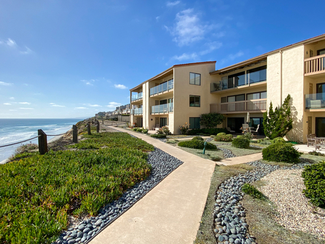California’s Statewide Rent Control Not Scaring Lenders Away

A survey from the National Multifamily Housing Council from earlier this year found owners are actively avoiding markets with rent regulations or considering leaving markets that institute these rules.
But in California, rent capping and rent control laws at the state and local levels haven’t made a big impact on multifamily lending, industry experts told Bisnow. Still, these and other regulations affecting multifamily developments, namely the still-active eviction moratorium in Los Angeles, have made some projects, such as value-add deals, harder to undertake.
Rent control is cropping up in more and more places nationwide. St. Paul, Minnesota, passed a 3% rent cap in 2021. Legislation that could create rent regulations has been proposed in at least a dozen states, The Wall Street Journal reported last month. The laws would restrict landlords from raising rents by no more than 2% to 10%. Rents have risen nationally by an average of 18% since the onset of the pandemic, the WSJ reported. The states with cities that are weighing these regulations are a geographically, demographically and ideologically diverse group that includes Arizona, Florida, Illinois, Kentucky, New Jersey, New York, Washington and Massachusetts, Insider reports.
California has had rent regulations in several forms for decades, and in 2019, Gov. Gavin Newsom signed AB 1482, capping how much landlords could increase rent in a significant portion of buildings across the state for 10 years. The rule makes it so multifamily landlords as well as owners of condominiums and single-family homes that are 16 years old and up can’t increase rent by more than 5% plus inflation per year. Landlords must also provide “just cause” for evictions under the law.
The law didn’t make the huge impact that many in CRE anticipated, Archwest Capital Senior Vice President of Sales Doug Perry told Bisnow.
“It wasn’t a tidal wave that immediately changed the landscape,” said Perry, whose firm is a direct commercial lender focused on multifamily and mixed-use nationally. “We haven’t changed the way we’re underwriting loans based on rent control laws, but it has made it a little more challenging in some scenarios.”
For instance, a value-add project that involves buying a property with a lot of deferred maintenance, renovating it, then raising rents might have a more difficult time coming to fruition.
“Those projects don’t get done as much because they can’t be done from a compliance standpoint with the rent control laws,” Perry said.
 There are workarounds that can help, such as what’s known as “cash for keys,” in which a lump sum is given to a renter in exchange for them leaving a unit. In most cases, the rent for that unit can be reset to a market-rate amount. But the sums of money it takes to get tenants to leave can be significant, and that is money that isn’t chipping away at the heart of these projects — fixing up the building so the units can attract renters who will pay more.
There are workarounds that can help, such as what’s known as “cash for keys,” in which a lump sum is given to a renter in exchange for them leaving a unit. In most cases, the rent for that unit can be reset to a market-rate amount. But the sums of money it takes to get tenants to leave can be significant, and that is money that isn’t chipping away at the heart of these projects — fixing up the building so the units can attract renters who will pay more.
“Sometimes the cost of doing that drives the cost of the whole project to the point that it’s just not a profitable project, and it doesn’t make sense,” Perry said.
Perry also noted that local rent control laws, rather than state-level ones, might pose more of a problem for smaller investors and individual owners that are invested in communities with those laws, but that the impact was at the individual project level, not a large-scale issue.
Eviction moratoriums, like the one in Los Angeles that is still in effect, can extend the timeline for value-add deals.
“For the borrower to expect to be able to turn an entire building when there’s an eviction moratorium and you can’t do no-cause evictions, that’s just not as likely,” said Shahin Yazdi, partner and managing director at George Smith Partners, which arranges loans for CRE borrowers across the country.
Instead, expectations need to be lowered, either that it will take longer for the building to be emptied out or that the building will not be fully emptied out. That means the deals need to pencil even if only half or a third of the building is cleared of existing tenants and made available to new, more affluent ones. The strength of multifamily through the pandemic has made this possible in some cases, though.
“Multifamily continues to be a strong performing asset, even with people not paying,” Yazdi said, speaking about Los Angeles and its ongoing eviction moratorium. “The foreclosure rates didn’t skyrocket. Landlords, maybe they did some deferred payments, but they continue to make their mortgage payments, so it’s a great asset class for lenders.”
Despite the positivity from the lender side, a January 2022 survey from the National Multifamily Housing Council indicated that movements toward rent control, not just in California but in states and cities across the country, are having an effect.
The survey, which received responses from 78 CEOs and senior executives at national “apartment-related firms,” asked whether the increasing numbers of localities that adopted, strengthened or were considering rent control or rent caps were affecting development and investment decisions. Thirty-two percent of respondents said they already avoid markets with rent control, while 26% of respondents said they have scaled back on investment in markets where this is happening because of approaches to rent control there.
But nearly as many respondents — 23% — said they don’t plan to change anything about their investments or developments in these areas despite rent control.
Despite the growing popularity of rent control pushes across the country, California seems to stick out among the crowd. Respondents to the NMHC survey were asked to list markets they are specifically avoiding, either due to existing rent control measures or the threat of new policy adoption. Of the 31 respondents who answered this question, 55% indicated specific markets in California or the state as a whole, NMHC said.
Between the statewide rent control rules and the rules that municipalities have adopted on their own or are planning to adopt, “California is a uniquely difficult place to operate,” National Multifamily Housing Council Vice President of Strategic Communications Jim Lapides told Bisnow. Every city that adds new rent control laws and every moratorium that’s still in effect adds up.
Despite those hurdles, Lapides said, it is still lucrative to invest there and investors will continue to do so. The greater Los Angeles market was the largest recipient of investment dollars in 2021, attracting $58.8B, according to a year-end report from CBRE citing Real Capital Analytics data. The Bay Area came in fourth, attracting over $35B. In greater LA and the East Bay, apartments were the asset class that garnered the most investment, the data showed. (In San Francisco, offices were the biggest recipient of investment.)
“California is always going to be an attractive market — there’s tens of millions of people that live there, there are huge markets, it’s important for the industry,” Lapides said. “But this trajectory that they’ve been on is really going to hurt them.”
Perry, by comparison, sees a pattern of adaptation to the hurdles that California has created so far.
“The reality, is rent control is here, statewide, it’s been here for a while, and we’ve learned to live with it, adapt to it, and make it work both from a lending standpoint and from a borrower standpoint,” Perry said.
Source: Bisnow















 Accessibility
Accessibility